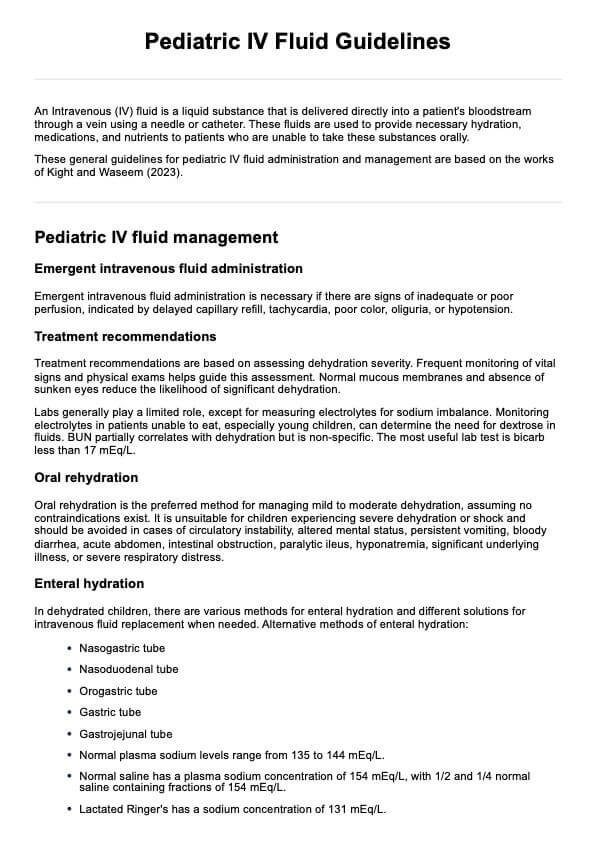Intravenous fluids are indicated for routine maintenance, fluid replacement of fluid deficits, and fluid resuscitation in shock.

Pediatric IV Fluid Guidelines
Learn about IV fluid management for pediatric patients. Download a free Pediatric IV Fluid Guidelines handout here.
Use Template
Pediatric IV Fluid Guidelines Template
Commonly asked questions
Maintenance intravenous rates are calculated using the Holliday-Segar formula based on the child’s weight.
Monitoring intake/output, electrolytes, and signs of fluid overload is critical to ensure safe and effective maintenance of intravenous fluid administration.
EHR and practice management software
Get started for free
*No credit card required
Free
$0/usd
Unlimited clients
Telehealth
1GB of storage
Client portal text
Automated billing and online payments











